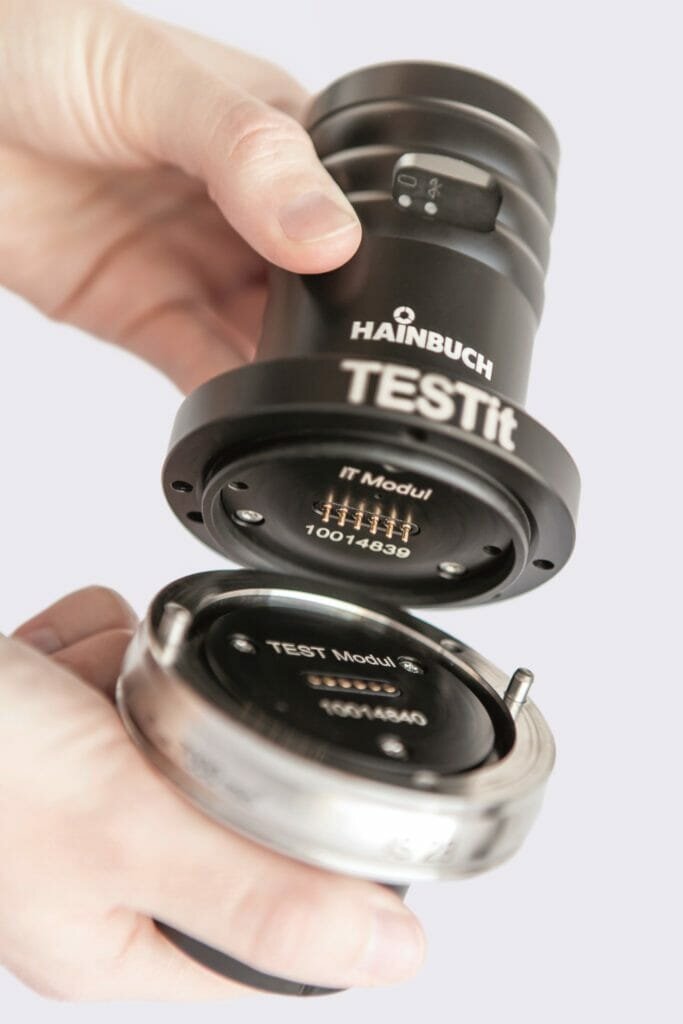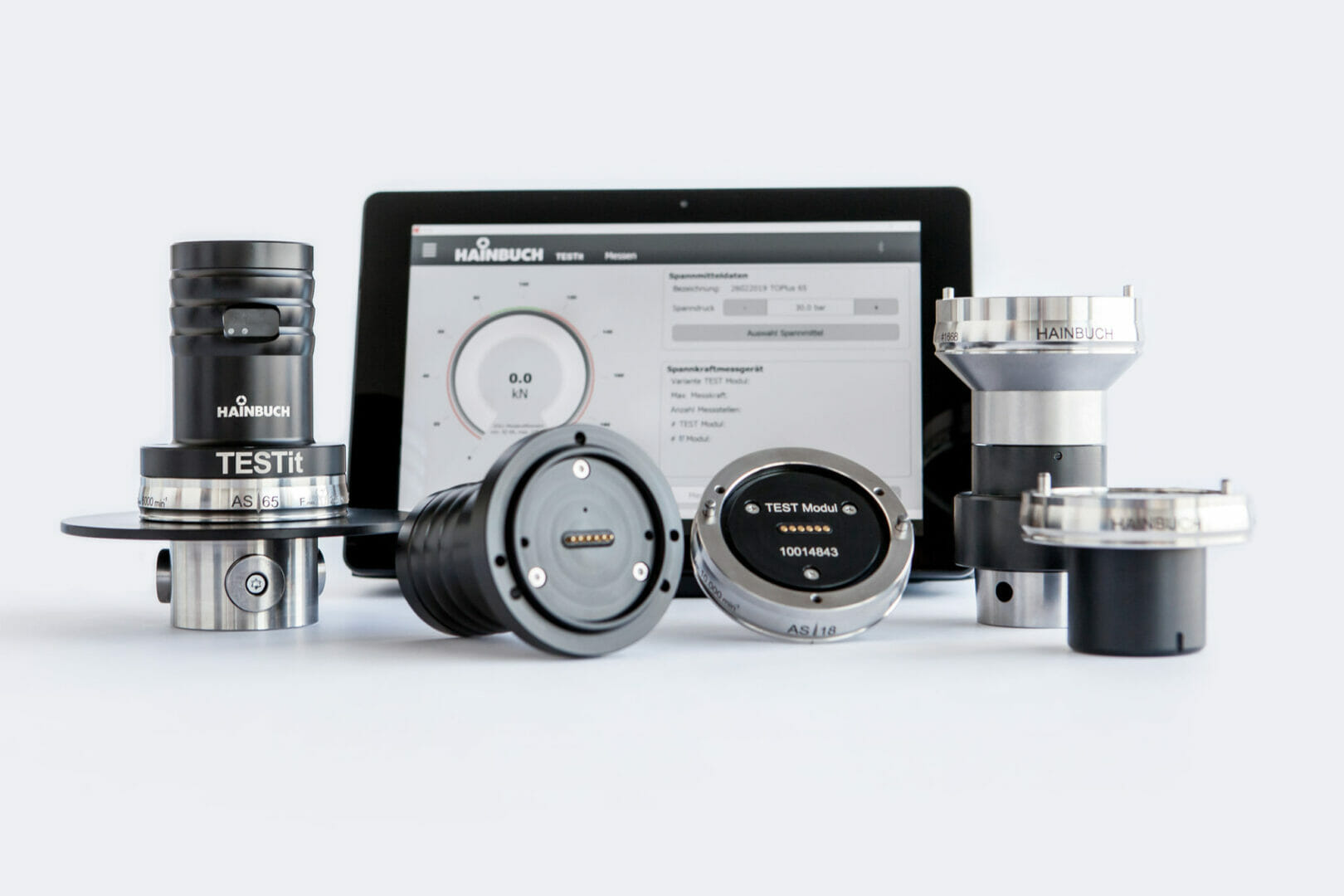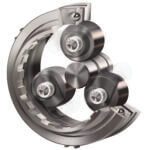To optimize products and to continue to develop them further, it is important for manufacturers to take into account user feedback on product functionality, as well as the customers’ view of market prices.
Hainbuch, the clamping device manufacturer from Marbach, Germany has done just this, and developed a fully updated version, or to be precise a complete redesign of the Testit clamping force measuring device for external and internal clamping. For Hainbuch, six years after the product was launched, it was time to bring the product electronics up to date and to bring the price down.
The new generation of clamping force measuring device now is made up of two parts: the Test Module or measuring unit, which changes depending on the specific measurement application, and the IT Module or basic unit. Combining the different variants makes for an extremely flexible solution which can measure almost anything. It can be used on multi-spindle machines, lathes and machining centres. In addition, there is an additional module for measuring and recording the insertion force of hollow shank taper tool holders [HSKs]. The Testit works as a modular system with plug-and-play functions. The included software is available on a 10” tablet, on a USB stick or as a download.

The basic unit and the measuring unit connect rapidly with the plug-and-play function.
Instead of one product, there are now two
Previously, the Testit was only available as a complete unit. Users bought one Testit for external clamping, another for internal clamping and, depending on requirements, others for different sizes or specific applications. The costs were clearly too high, and Hainbuch has taken action to resolve this. Customers need to purchase only one basic unit or IT Module regardless of whether they need to measure the external or internal clamping force or pull-in force. The Test Modules are then added to the basic unit, which even fits specially-designed versions of the measurement modules. This means that costs are significantly lower when compared to the measuring devices generally available on the market, and for two or more devices, costs are almost cut in half. With the plug-and-play function, each measuring unit can be detached from the base unit with just 3 screws and swapped out quickly – just as customers are used to doing with Hainbuch clamping devices.
A secure feeling
To ensure that a process remains safe, precise and productive, regular monitoring of the clamping and draw force is essential. Today, no one can afford to manufacture with “theoretical values”. Who wants to have workpieces rejected because the clamping force is too low or have deformations if the clamping force is too high? No-one. Likewise, detecting the lubrication and contamination status can prevent costly and unscheduled maintenance. In any case, DIN EN 1550 specifies that static clamping force measurements are to be carried out at regular intervals. The new Testit clamping force measuring device measures and records the clamping and draw forces, even in the case of special versions. For example, for customer-specific measuring ranges or measuring positions and the pull-in force of standard zero-point clamping systems.
Software handles more data
The program for visualizing the measured values has three display variants: a speedometer display, bar graph display or line diagram for displaying the measuring force change under speed. An integrated administration database allows users to select their current clamping device and their machine. All data is maintained and clearly presented in the database. The measured values are archived as PDF and CSV files. In addition to the language selection in German and English, French is now also available, other languages will follow.





